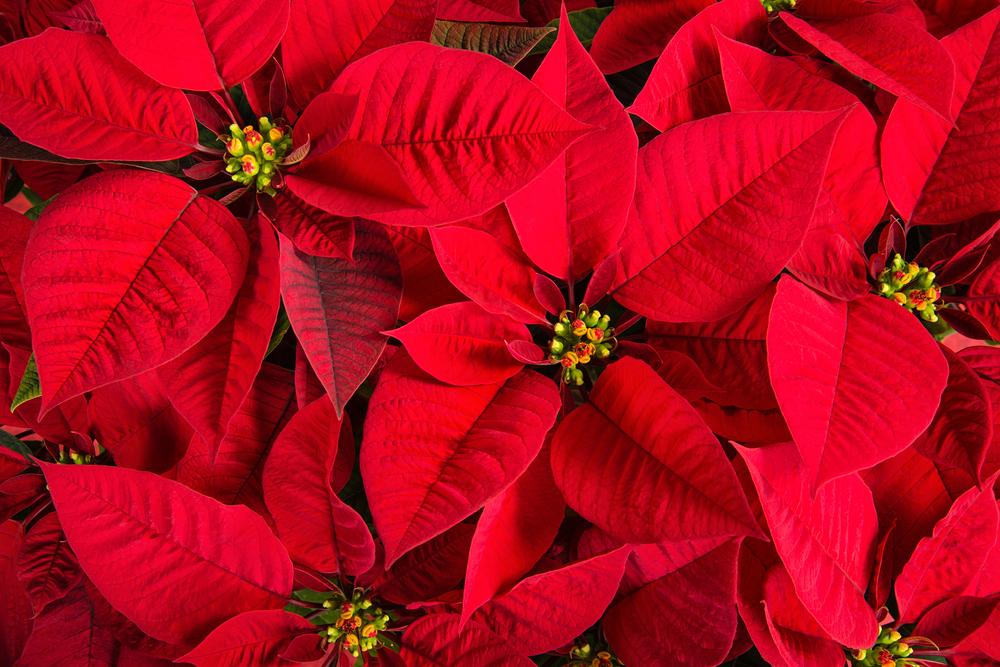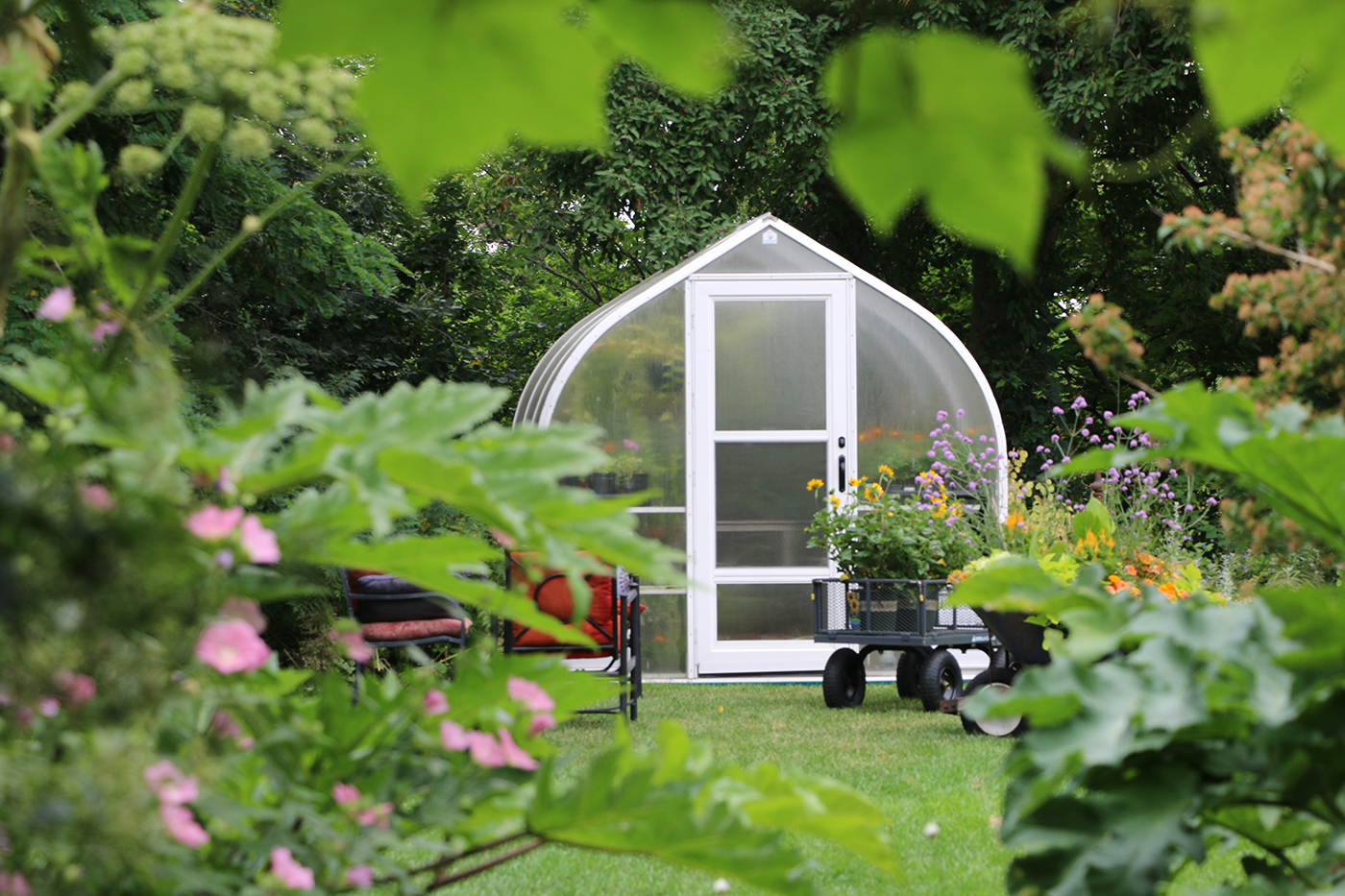Holiday houseplants have always been a trigger for me… in a good way. For example, looking out at Tagawa’s sea of poinsettias takes me way back to memories of holidays long ago. A large poinsettia would take center stage on my family’s dining room table. We’d have to move the big plant just to see each other across the table when it was time to eat. (Eat we did! You can keep the turkey. Just pass the mashed potatoes and gravy, please. But that’s another story…)
Which holiday plants take you back?
I’m sure I’m not alone in having the sight of poinsettias carry me back, but maybe it’s big beautiful amaryllis that tickles your holiday fancy, or perhaps it’s the exotic beauty of Thanksgiving or Christmas cactus in full bloom that brings to mind other people, places and times. Whatever your favorite holiday plant might be, let’s take a quick look at how to care for them, showing them a bit of holiday love… and briefly sharing a couple of my own memories that make these plants so special.
Gotta start with poinsettias, of course!
Back in the day, you could have any color of poinsettia you wanted… as long as it was red. How times have changed!
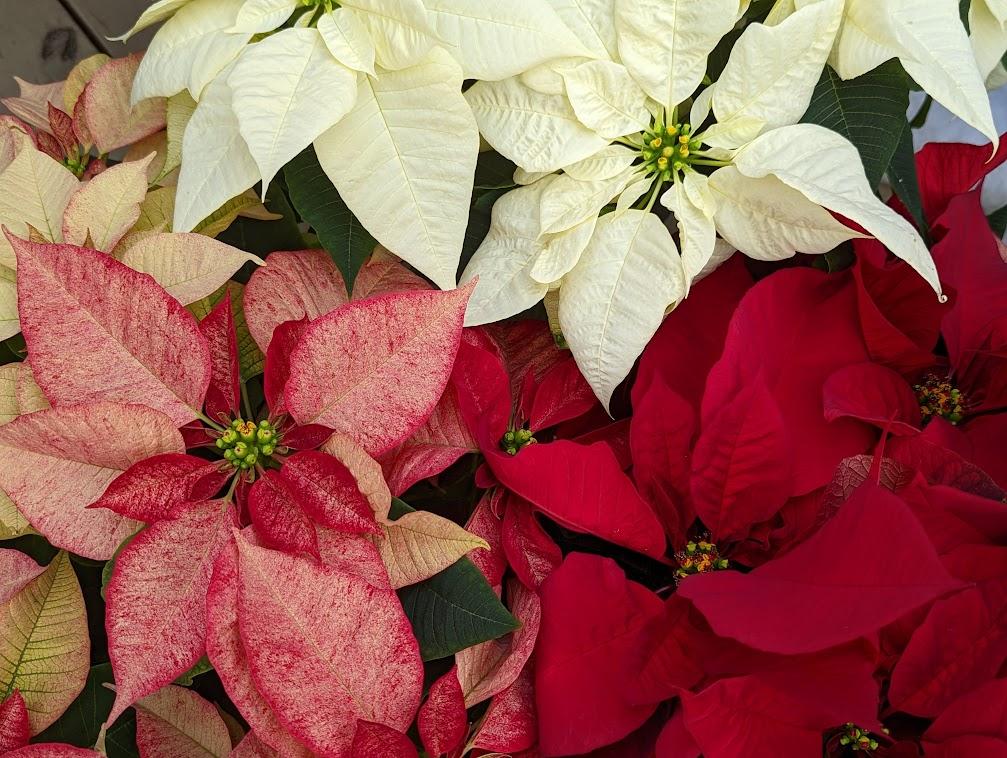
This year Tagawas is offering twenty different varieties of poinsettias: red red, dark red, orange red, reddish orange, reddish pink, red with streaks or splashes or swirls of white… poinsettias that look like roses… even beautiful golden or yellow poinsettias that shift the mood effortlessly from fall to winter. And that’s not to mention poinsettias decked out in your favorite team colors!
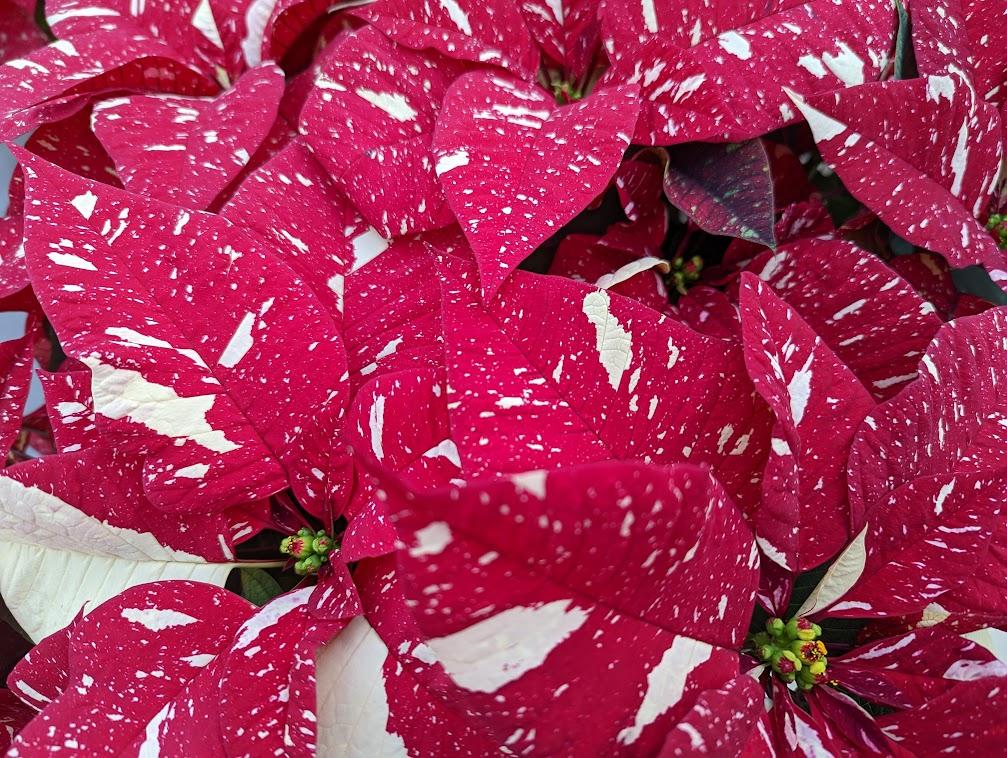
This is one of my personal favorites, “Glitter.” My grandmother would have loved it!
How to keep your poinsettia happy
Poinsettias are native to Mexico and parts of Central America where they grow wild, often on steep hillsides. Imagine that! An entire panorama of beautiful rich red plants! Given their native homes, it’s easy to understand why they won’t tolerate consistently wet soil, but will also wilt hard if they get too dry… never to recover. It’s best to water the plants thoroughly, then let the excess water drain away freely. Drench and drain again when the top inch of soil is dry to the touch.
Poinsettias are sensitive to even brief drafts, hot or cold, so avoid displaying them near heat vents or doorways that let in chilly air. They’ll look their best placed near (but not in) a window where they can get full morning light or six hours of bright indirect light. Even without that much light, poinsettias should hold their color nicely for several weeks.
And for the record…
…poinsettias are not poisonous! A poinsettia’s milky sap can cause skin irritation for people who are allergic to latex. Children or pets eating lots of poinsettia leaves would get an upset stomach, but nothing that qualifies as “poison.” Still, caution is always the best policy. As with all houseplants, keep them out of the reach of inquisitive children and furried or feathered family members!
Lovely, elegant amaryllis!
Amaryllis bulbs produce flowers so stunning they can stop you in your tracks! The colors range from the whitest of whites to corals and coppers, pinks, burgundies and beautiful patterns streaked, striped or edged with red or white.
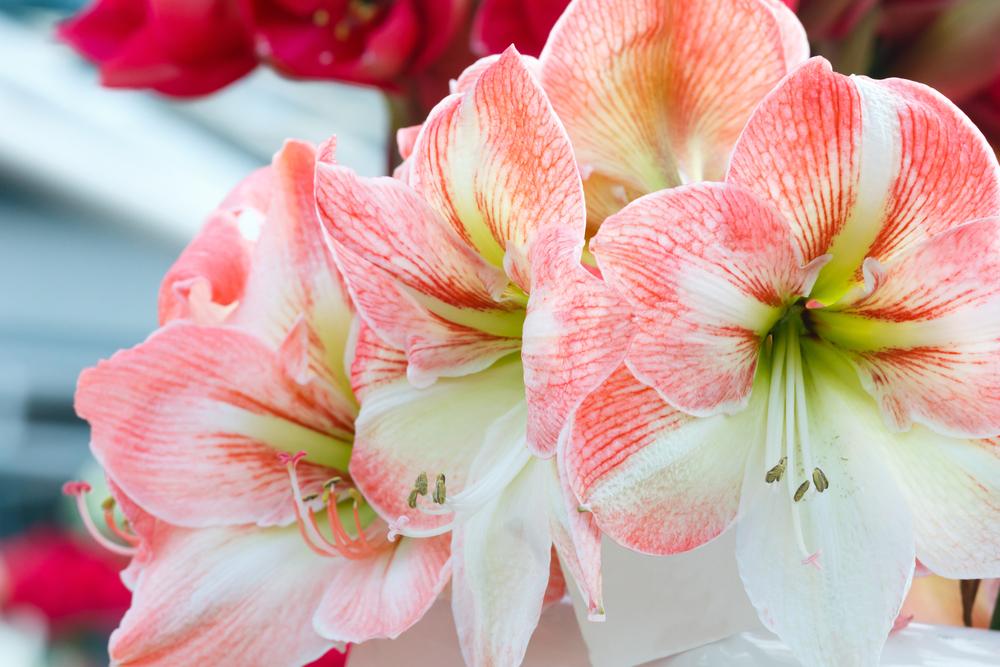
The bigger the amaryllis bulb, the bigger the flowers it will produce. It’s good to remember that as big as these bulbs can be, they do best in a fairly tight-fitting pot. Choose a pot (always one with drainage!) that’s no more than two inches larger than the widest part of bulb itself and at least seven inches deep. Only two-thirds of the bulb should be down in the soil, with the top third sitting well above the soil line to make sure water doesn’t get down into the bulb and cause rot.
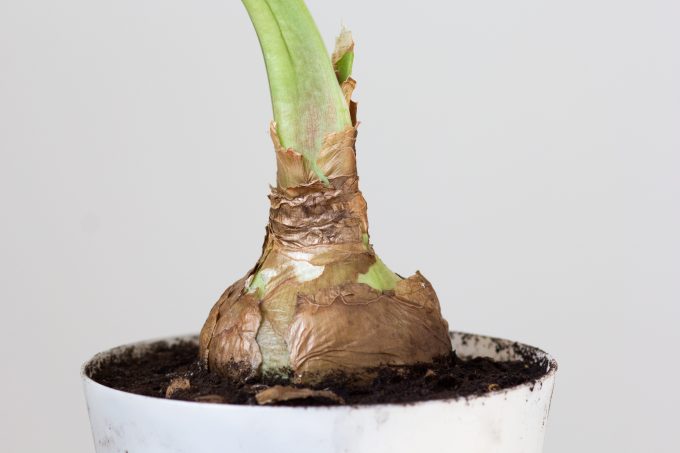
Water the bulb when it’s first planted, applying the water around the outside edge of the bulb, not into the center. Drench the pot until you see water coming out the drainage holes and then don’t water again until the tips of either leaves or flowers begin to emerge. Never let the plant sit in standing water. And don’t be surprised if the flower stalks emerge before the leaves.
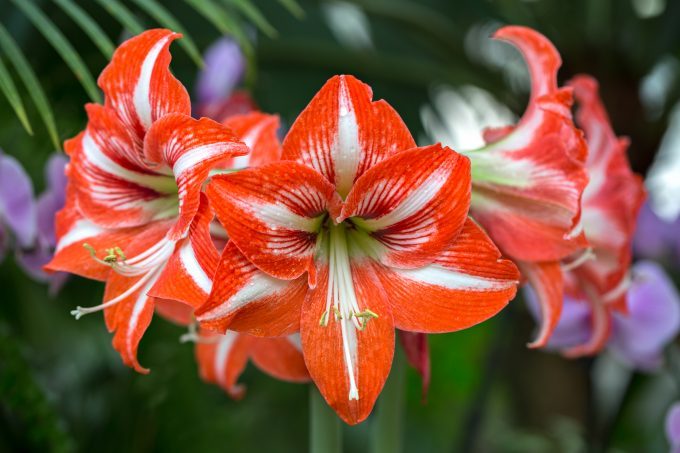
If you want to encourage the amaryllis bloom again after several months, cut the flower stalk down to about an inch tall once all the blossoms have faded. Keep the leaves growing in bright light for as long as they look healthy. When they start to yellow and wilt, cut them off and store the bulb in its pot in a cool, dark place… watering sparingly over the winter… just enough to keep the bulb from shrinking.
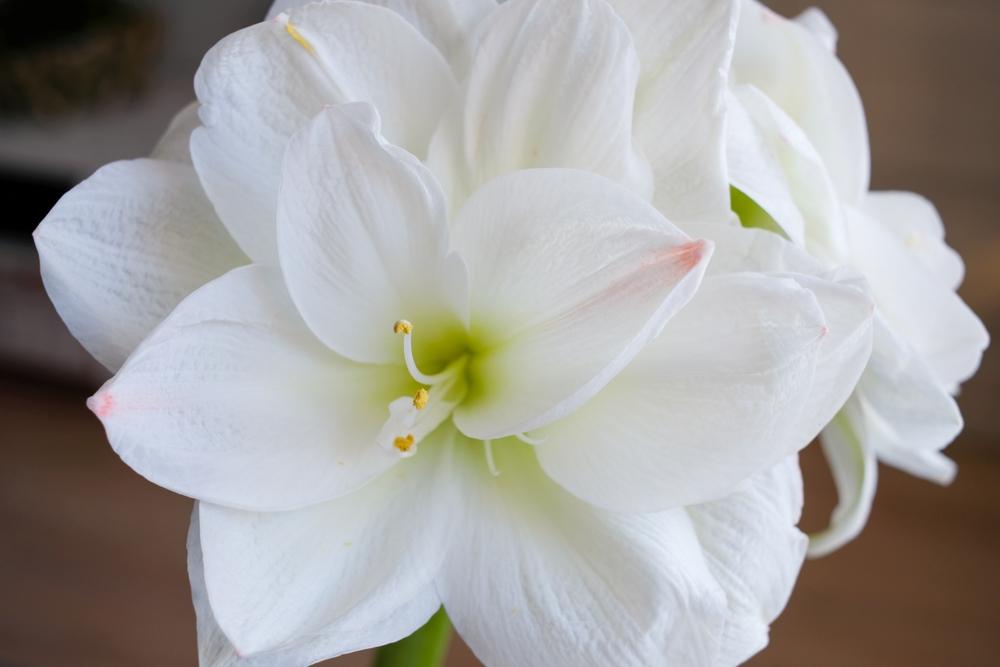
Come next May, replant the bulb in fresh soil. Once the nights are warm enough, set the amaryllis outdoors in a sunny but protected location. Fertilize with a quality plant food per the product’s instructions. Cross your fingers, and with just a bit of luck, you’ll get another show of flowers with time.
Like poinsettias, amaryllis have a soft spot in my heart, too. After my grandfather had to give up his beloved gardening, I’d send him an amaryllis bulb every Christmas. It took up a place of honor right next to his easy chair. I can still hear it: “Honey, I can sit here and just watch this thing grow!” See what I mean about plants and memories? The sooner you plant your own amaryllis, the sooner it will be making new memories for you and your family!
Easy, exotic Christmas (and Thanksgiving… and Easter) cactus
Of all the holiday plants, “Christmas” cactus is one of the easiest holiday plants to nurture long after the seasonal celebrations have passed. There are some physical differences in the plants associated with the three separate holidays, but their care is the same.
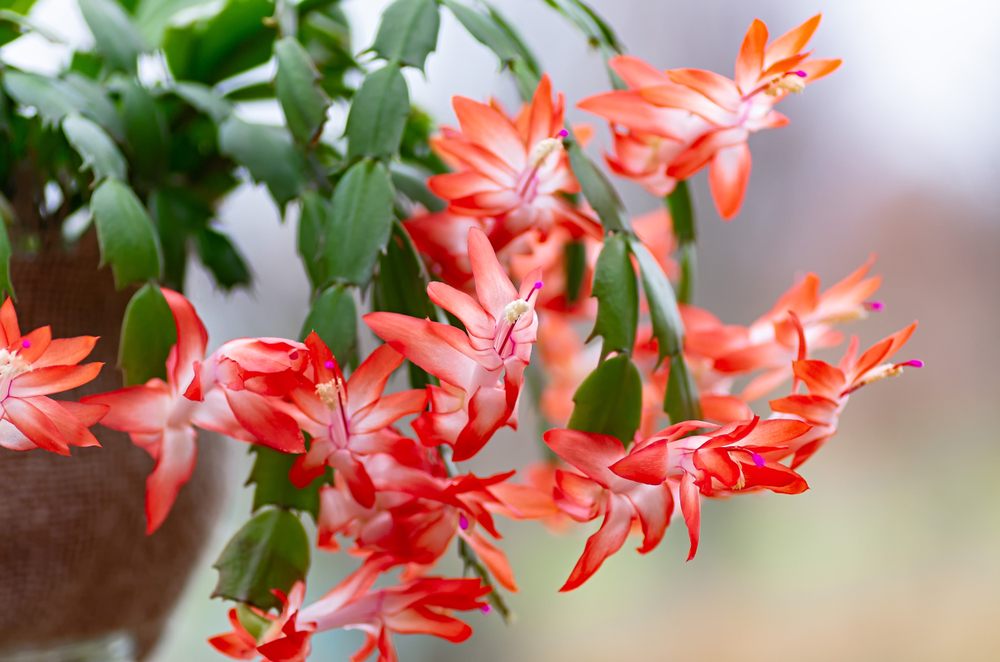
These plants are native to the coastal mountains of southeastern Brazil, so think of them as “cactus” in name only.
Christmas cactus (a.k.a. Thanksgiving cactus or Easter cactus, depending on when they happen to bloom) does best in morning sun or very bright but indirect sun. When flowers are present, slightly softer light will help the blossoms last longer.
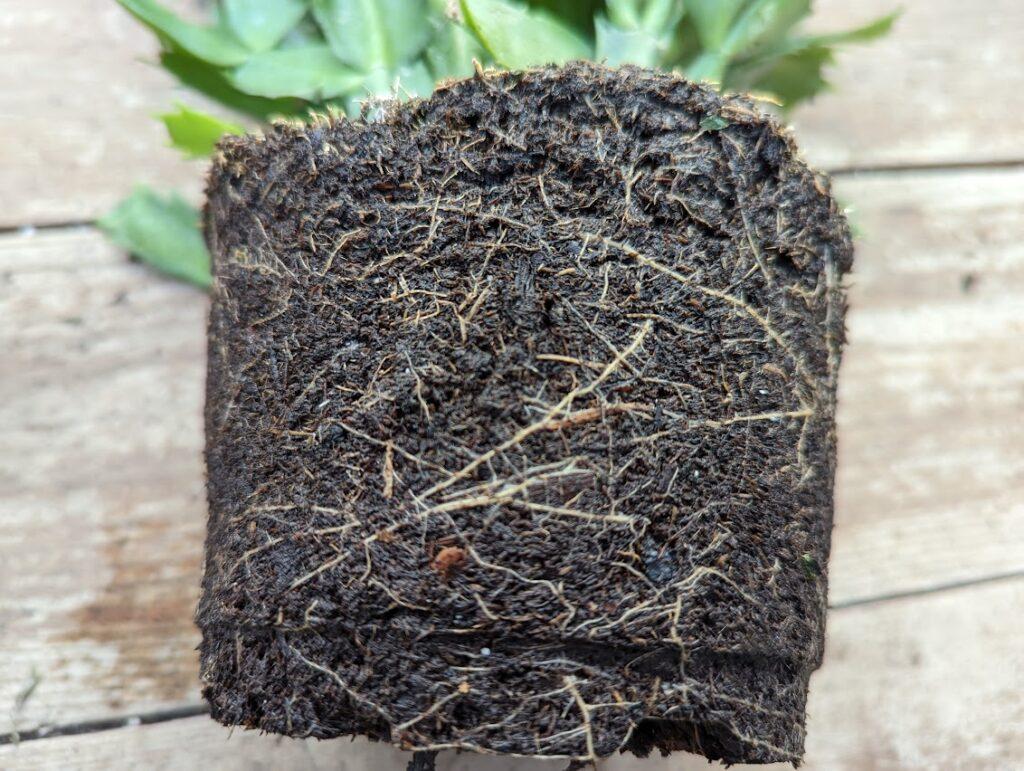
Christmas cacti have very fine roots that will quickly rot if the plants are in a pot that’s too big. Without a big root system to pull in the moisture, the soil can stay too wet for too long. Root rot could easily set it. Water the plant thoroughly, then allow the soil to dry out a fair bit before the next big drink. Always make sure the pot has good drainage. Never let a holiday cactus sit in standing water.
Treat your holiday cactus like any other houseplant… good light, proper watering and appropriate fertilizer during the growing season. If it’s happy, it will definitely bloom again in months and years to come.
And my Christmas cactus memory?
Years ago, long before my Master Gardener days, my mother gave me a Christmas cactus that was loaded… absolutely loaded with flowers. I carried it to the car that chilly night without protecting it. The next morning, every single flower and bud had fallen off. The plant itself was fine, but the cold air was just too much too much of a shock for the blossoms. Lesson learned: never expose your holiday cactus to cold drafts or blasts of hot air such as heat vents either. They’re just fussy that way.
Holiday plants… and lots more… are waiting for you at Tagawas!
Free care sheets for poinsettias, amaryllis and Christmas cactus are available at Tagawas to help you keep your holiday plants healthy and beautiful in the weeks to come. A huge shipment of Christmas trees is in now, too! And the Tagawa Gift Shop is bursting with beautiful and unique gifts and holiday decor.
Take note: Santa’s first visit to Tagawas is just days away! For details of Santa’s visits and other holiday activities coming up, go to the calendar on our website, tagawagardens.com
Hope to see you soon!
